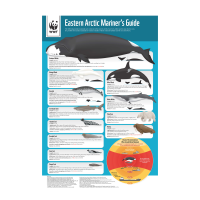
New WWF guide helps mariners steer clear of Arctic wildlife
WWF-Canada has published a guide to help mariners in the eastern Arctic to identify and avoid marine mammals.
With summer sea ice on the decline and industrial pressures increasing, the volume of shipping traffic in the Canadian Arctic has steadily risen. This new and changing reality has prompted WWF-Canada to publish the Eastern Arctic Mariner’s Guide to help mariners to minimize shipping-related disruptions to wildlife and northern communities.
The guide was developed after the success and broad adoption of the Mariner’s Guide to Hudson Strait, which was published last year and is made up of three large posters to display on a ship’s bridge, specifically:
- A visual identification chart that helps mariners to recognize whales, seals, polar bears and walruses.
- Maps of critical habitat, migration routes and calving areas.
- Maps indicating designated conservation areas and ice, including community on-ice travel routes and caribou sea-ice crossings.
The guide recommends courses of action regarding sensitive whale habitat, walrus habitat, caribou sea-ice crossings, shipping in polynyas (large areas of open water surrounded by sea ice that are found in the same region annually) and around floe edges, ice-breaking and Inuit travel routes, as well as a tourism exclusion zone and travel speed. It also lists phone numbers so mariners can report sightings and incidents at both the national and community level.